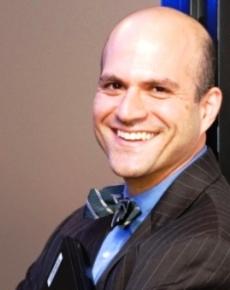
Health IT - Better Healthcare at Lower Cost? Interview with Dr. Farzad Mostashari, National Coordinator for Health IT

This week marks the 8th annual National Health IT Week --a virtual event offering all healthcare stakeholders an opportunity to unite under one banner, expressing the benefits that health information technology (IT) brings to U.S. healthcare.
Health Information Technology or Health IT has the potential to transform the practice of healthcare by reducing cost, improving quality, and enabling a patient centered approach to care. Simply put, Health IT is just a way of collecting and moving around information. It can be viewed as the circulatory system for information. Information is the lifeblood of medicine, Health IT the heart and arteries of that information. While Health IT offers much promise, there is a need for leadership, coordinated action, unity of effort, and common agreement for this promise to become a reality.
- What are the benefits of using Health IT?
- What does meaningful use mean as it relates to electronic health records?
- How has the national adoption and use of Health IT, especially electronic health records, progressed?
- What more needs to be done?
I explored these questions and more with Dr. Farzad Mostashari, National Coordinator for Health IT on The Business of Government Hour.
Before delving into specific initiatives, Dr. Mostashari provided a brief overview of the history and mission of his office as well as the many challenges faced in making the promise of health IT reality.
Dr. Mostashari underscores the unique part of his mandate is the creation of a national infrastructure that can help us learn, measure care, improve care, relate to patients, coordinate care, and help us do population health management. “If we can't help provide that infrastructure, the foundation” asserts Mostashari, we will not have done our job.” Doing this job is fraught with significant challenges, which became evident as soon as he took the job in April 2011. “April 8th was the date we were supposed to shut down the government,” admits Mostashari. “First and foremost, among our challenges was the tremendous uncertainty around budgets. We haven't had a real budget since then, and there's been considerable uncertainty month to month, week by week with sequester, impact on travel and conferences, and impact on our ability to plan our investments.”
Despite the many challenges related to the nationwide adoption and meaningful use of Health IT, Mostashari’s vision and goals are clear. For Mostashari what really defines the transformative potential of Health Information Technology is making the bits and bytes of patient information come alive, and answer some basic questions that no retailer could survive today without being able to answer about their customers. “If we can't do that in healthcare then we're leaving lives on the table,” declares Mostashari. “It’s the age of data and we’re bringing that data to healthcare.”
To do this, the HITECH Act introduced the concept of MEANINGFUL USE as relates to the nationwide adoption of electronic health records. Mostashari explains what it means, elaborates on the three-staged approach being taken to achieve meaningful, and the barriers faced. The HITECH also called for the creation and establishment of two federal advisory committees, Mostashari explains.
Interoperability is at the heart of the nationwide Health IT effort. Dr. Mostashari explains it, the critical barriers to achieving the goal of nationwide interoperability, and the importance of effective governance.
Recognizing the need to understand how Health IT can promote patient safety as well as identify and mitigate risks, Mostashari commissioned an Institute of Medicine (IOM) study, Health IT and Patient Safety: Building Safer Systems for Better Care?, to determine how government and the private sector working collaboratively can maximize the safety of health IT-assisted care.
In the end, Mostashari admits how critical it to have an interoperable health information technology infrastructure in place in order to sustain many of the reforms outlined in the Affordable Care Act.
This is National Health IT Week. “There are a series of events, both within the Department of Health and Human Services and with our partners and others who are really taking this week to mark the important role that managing information better and bringing that data to life can have for the lives of patients everywhere,” explains Mostashari.
Listen to my entire conversation with Dr. Farzad Mostashari, National Coordinator for Health IT on The Business of Government Hour.



